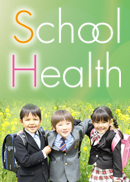Background: There are 93-150 million children with disabilities worldwide, and they are mostly excluded from education. Following the Salamanca World Conference, many countries sought to provide education for them. However, research concerning inclusive education (IE) among Association of Southeast Asian Nations (ASEAN) has not been thoroughly examined. Hence, in this study, a literature review was conducted comprising English-language research published between 1995-2015 to determine the status of the inclusion of children with disabilities among ASEAN members.
Methods: Relevant literature were searched by ScienceDirect, SpringerLink, Scopus, ERIC, and POPLINE. The references of identified articles were likewise searched in order to find relevant publications. Studies were selected if they were (a) published in a peer-reviewed journal, (b) written in English, (c) addressed one or more aspects of IE among children with disabilities in ASEAN countries, (d) published between 1995-2015, and (e) available online, either in the form of a comprehensive abstract or full text. The included articles were classified into four categories: (1) studies on attitudes toward IE, (2) studies on the difficulties of IE, (3) studies on the evaluation of IE, and (4) others. Each study was reviewed with respect to title, publication year, country, purpose, methods, and key findings.
Results: Twenty-seven publications were identified. Of them, 78% of the studies had been conducted in Malaysia and Singapore. The number of publication in (1)-(4) category was 9, 3, 8 and 7 respectively. Interest in IE has grown rapidly in recent years. Twenty-two (81%) of the articles were written in 2010 or later.
Conclusions: Interest in IE is growing rapidly in ASEAN countries; nevertheless, their collective IE-related research output has a disparity among the countries. Studies on attitudes toward IE were a key focus, and research in all of the categories utilized in this paper have increased significantly since 2010— particularly in terms of demonstrating the efficacy of IE by using objective scales.
View full abstract
